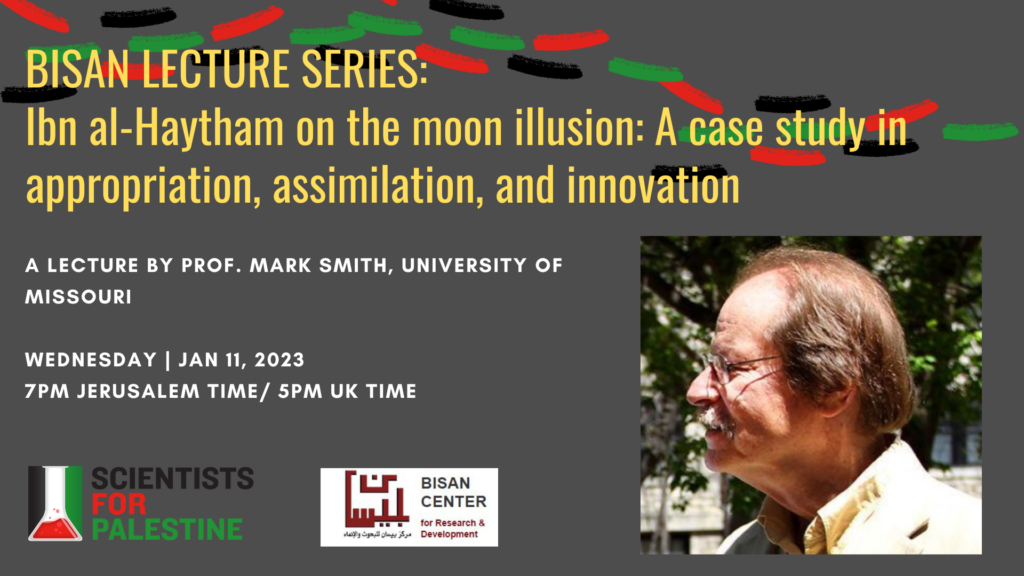
Prof. Mark Smith (University of Missouri)
Title: Ibn al-Haytham’s Analysis of the Moon Illusion: A Case Study in Appropriation, Assimilation, and Innovation
Abstract: We tend to view “breakthrough” scientific thinkers as lone geniuses whose originality of thought is so total that it transcends the thinkers’ actual time and place. As a result, we often treat them as if they had no intellectual past. Ibn al-Haytham (965 CE?–1040 CE) offers an instructive example. Much that has been written about him at both the popular and scholarly level emphasizes the modernity of his ideas at the expense of their roots in the past. The result is a badly skewed account of both his thought and its historical development.
With that in mind, I’ll examine Ibn al-Haytham’s explanation of the Moon Illusion in the seventh book of his magisterial Kitāb al-Manāẓir (“Book of Optics”). In the process, I’ll look at 1) how he drew on Greek sources, Ptolemy’s Optics in particular, for his basic knowledge of optical precepts (appropriation), 2) how he adapted that knowledge to make it his own (assimilation), and how, on that basis, he expanded the scope of optical analysis in an original way (innovation).
Biographical Sketch: Mark Smith
Curators’ Professor of History (emeritus), at the University of Missouri, Columbia, A. Mark Smith has published widely on ancient, medieval, and early modern optics and visual theory. Foremost among these publications is his eight-volume critical edition and translation of Alhacen’s De aspectibus, the medieval Latin version of Ibn al-Haytham’s Kitāb al-Manāẓir,which has appeared in installments between 2001 and 2010. More recently, he has published From Sight to Light: The Passage from Ancient to Modern Optics (University of Chicago, 2015) and Optical Magic in the Late Renaissance: Giambattista Della Porta’s De Refractione of 1593 (American Philosophical Society, 2019).
